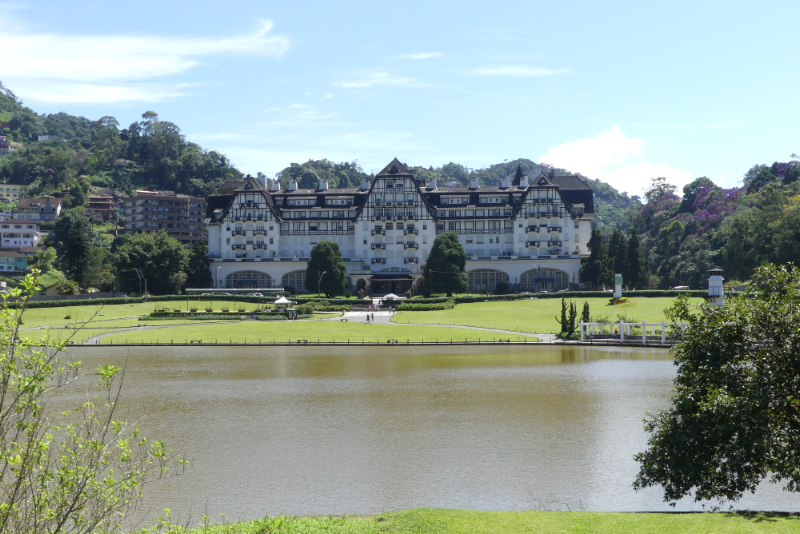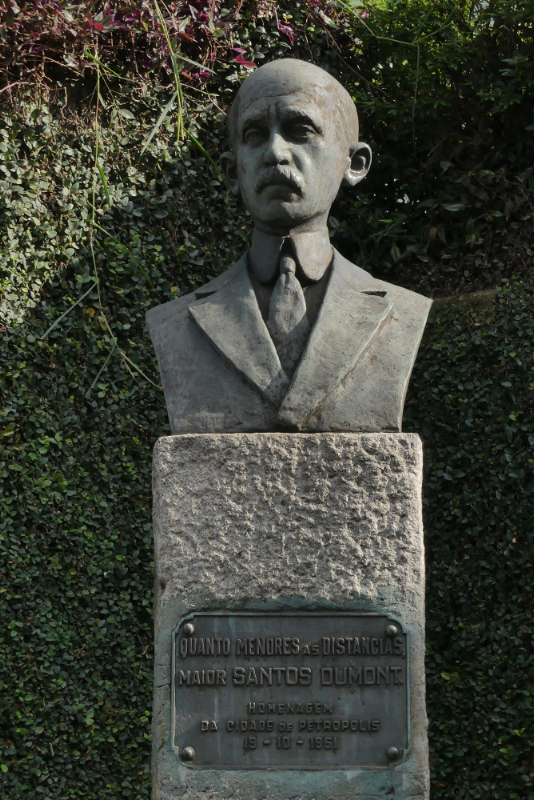Wednesday 14 March
We took the opportunity to learn a little of the imperial kingdom of Brazil on a day tour to Petrópolis.
We started our day tour with a German style kuchen & kaffee and then a view of the Tudor-French style casino that was built in 1946. As soon as it was opened gambling was banned in Brazil, so it was shut down. It is now apartments.
From there we visited the Crystal Palace which was a gift to Princess Isabela from her husband. It had a lovely display of orchids.
Next stop was the Catedral São Pedro de Alcântara where the tombs of Pedro II, his wife wife Teresa Cristina, their daughter Princess Isabel and her husband are buried.
Then it was our tour’s turn for the Imperial Palace, but of course, photos were not permitted.
King John VI of Portugal, moved the seat of his kingdom to Brazil in 1808 when Napoleon Bonaparte invaded Spain and Portugal. His time in Portugal left a lasting legacy of the modern Brazilian state. He stayed for thirteen years and returned to a broken Portugal.
Meanwhile his son Pedro I deposed his father, gave Brazil its independence and became its emperor. The loss of Brazil came at a time when Portugal’s economy was in very bad shape.
Petrópolis was established by Pedro I, after he found the cooler climate in the mountains more comfortable in summer.
Pedro I abdicated the throne of Brazil returned to Portugal in 1831 to fight his brother Miguel for the throne. He became Pedro IV in Portugal and died in Portugal.
Pedro’s son Pedro II was 5 when his father returned to Portugal and he and his sisters were left in the care of various courtiers. Pedro was lonely and enjoyed learning and his books more than anything else.
Pedro II built the imperial palace at Petrópolis and he and his family spent four to six months there each year. Following his studious youth he spoke 23 languages, 17 fluently.
In 1843 the Brazilian government secured the Princess Teresa Cristina of the Kingdom of the Two Sicilies and they were married by proxy. She was small, ugly and lame and he was disappointed. They went on to have 4 children. Their two sons died in their second years. Two daughters, Princesses Isabel and Leopoldina survived. Isabel married a French nobleman and stayed in Brazil, acting as regent in her father’s absence. In 1888 Isabel abolished slavery in Brazil. Leopoldina married into Coburg family and lived in Germany.
The palace did not have electricity so the family ate lunch at 9:00am and dinner during daylight hours, between 4:00 and 5:00pm. However Pedro II had met Graham Bell at the world show in Philadelphia and was so impressed he had a phone installed.
The gardens were lovely and we enjoyed some time wandering around them before we were shunted off to lunch. We declined lunch and explored the small town instead. We were looking forward to the evening meal in our hotel restaurant.
It appeared that a visit to see the home of Alberto Santos-Dumont was on the agenda, but we somehow ended up in a chocolate factory.
Dumont was a Brazilian inventor and aviation pioneer, one of the very few people to have contributed significantly to the development of both lighter-than-air and heavier-than-air aircraft
There was a brewery tour on the agenda, but again, somehow we ended up in a very tacky shopping street instead – and a waste of time on our last day in Brazil.
Of course the imperial palace and the history behind it was wonderful, but we have been disappointed by tour guides who lean towards taking their clients to eat and drink and buy souvenirs rather than the promised agenda.
The evening meal at our hotel was exceptional and made up for what we missed during the day.
It was an early night – our last packing and a horribly early departure for our flight home via Santiago.
e_header.jpg)




































